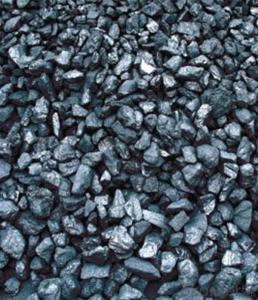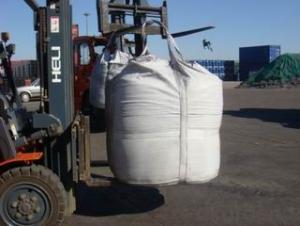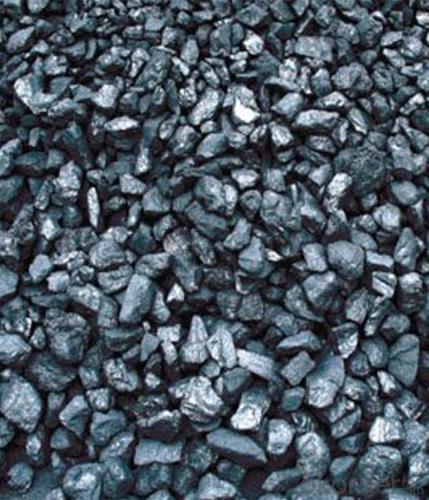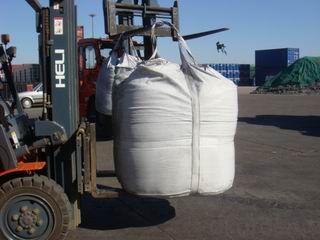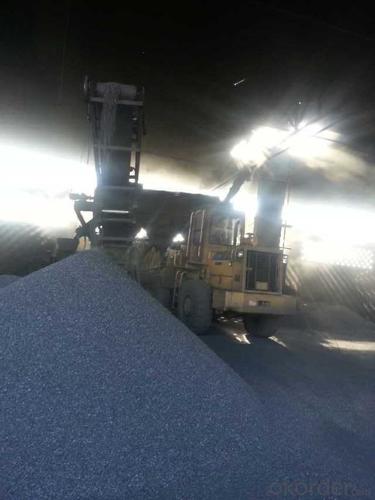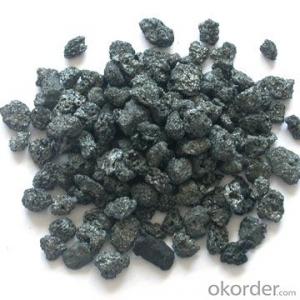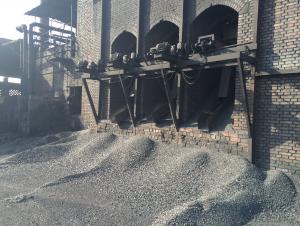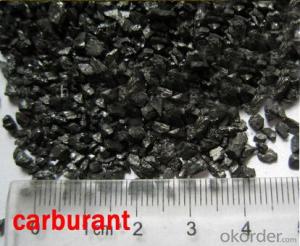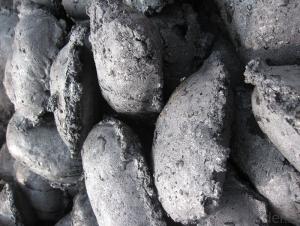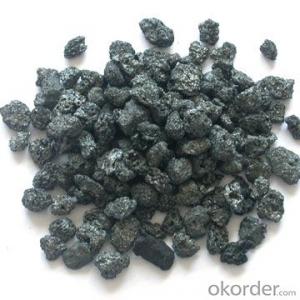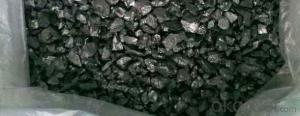FC 90%-95% Gas Calcined Anthracite
- Loading Port:
- China Main Port
- Payment Terms:
- TT OR LC
- Min Order Qty:
- -
- Supply Capability:
- -
OKorder Service Pledge
OKorder Financial Service
You Might Also Like
•Feature:
All of our goods are made in the best quality of world famous Ningxia Taixi Washed Anthracite Coal. All of our products are with High carbon, Low ash, low sulphur, Low Moisture.
•Application:
The Calcined Anthracite Coal/Gas Calcined Anthracite Coal/Carbon Raiser is mainly used in steelmaking in electrical stove, screening water, shipbuilding sandblast to remove rust. It can reduce the cost of steelmaking effectively by replacing the traditional petroleum coke of carburant.Also can improve the Carbon content in steel-melting and Ductile iron foundry.
Package:
IN MT BAGS OR AS BUYER'S REQUEST
General Specification:
PARAMETER UNIT GUARANTEE VALUE | |||||
F.C.% | 95MIN | 94MIN | 93MIN | 92MIN | 90MIN |
ASH % | 4MAX | 5MAX | 6MAX | 7MAX | 8MAX |
V.M.% | 1 MAX | 1MAX | 1.5MAX | 1.5MAX | 1.5MAX |
SULFUR % | 0.5MAX | 0.5MAX | 0.5MAX | 0.5MAX | 0.5MAX |
MOISTURE % | 0.5MAX | 0.5MAX | 0.5MAX | 0.5MAX | 0.5MAX |
Size can be adjusted based on buyer's request.
Pictures of Calcined Anthracite:
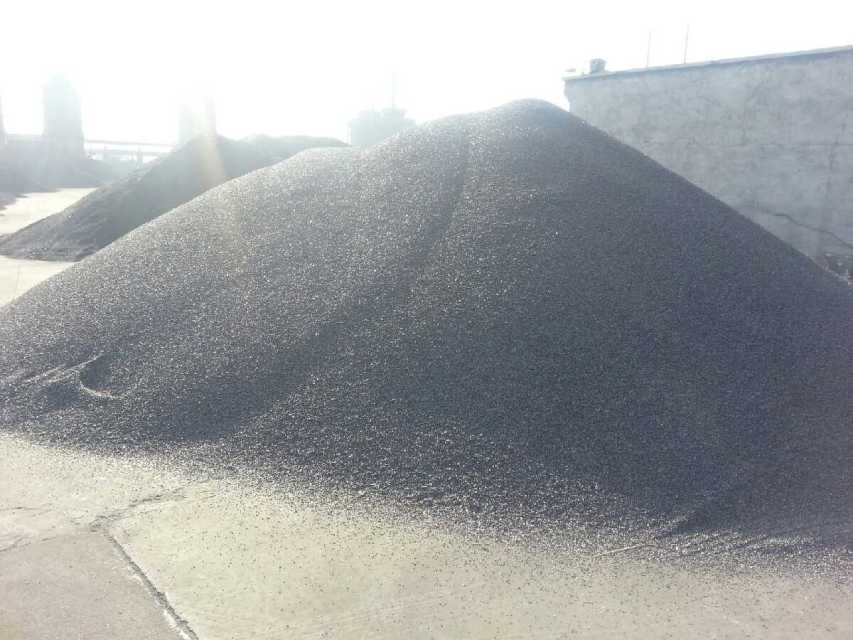
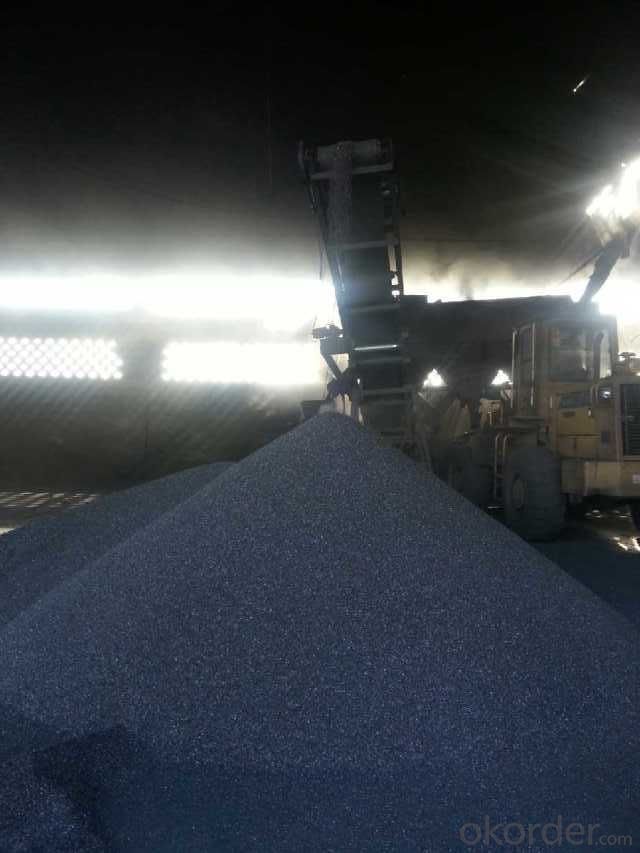
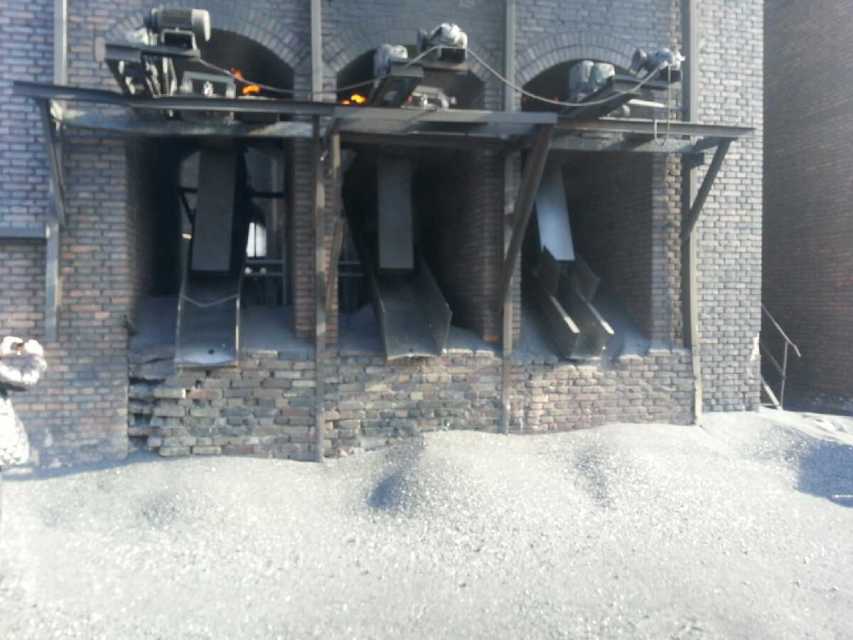

We can supply below materials, please contact us if you areinterested in any of any of them,we will offer our best price as soon as possible:
Calcined Anthracite with fixed carbon from 90% to 95%
Carbon Electrode Paste
Calcined Petroleum Coke
Carbon Electrode Paste
Ferro-Silicon
Ferro Mn
Ferro -P
Cored Wire
- Q:How is carbon used in the production of fuel cells?
- Fuel cells utilize carbon in various ways during their production. The construction of electrodes is one of the primary applications of carbon in fuel cells. These electrodes, which consist of an anode and a cathode, are commonly made from carbon-based materials like graphite or carbon paper. These materials enable the electrochemical reactions within the fuel cell to occur by offering a conductive surface. Furthermore, carbon serves as a catalyst in fuel cells. Catalysts are substances that accelerate chemical reactions without being consumed in the process. Carbon-based catalysts, such as platinum or palladium, are frequently employed in fuel cells to facilitate the reactions that generate electricity. These catalysts enhance the efficiency of fuel-to-electricity conversion. Moreover, carbon is employed in the form of carbon nanotubes during fuel cell production. Carbon nanotubes exhibit unique properties such as high surface area and exceptional electrical conductivity, making them ideal for enhancing fuel cell performance. By providing a larger surface area for reactions to occur on, carbon nanotubes can improve the efficiency of fuel cell reactions. In summary, carbon plays a vital role in fuel cell production by providing the necessary materials for electrode construction, acting as catalysts for electrochemical reactions, and enhancing fuel cell performance through the utilization of carbon nanotubes.
- Q:How is carbon formed in stars?
- Carbon is formed in stars through a process known as nuclear fusion. In the core of a star, hydrogen atoms undergo a series of fusion reactions, ultimately fusing together to form helium. This process releases a tremendous amount of energy and is responsible for the heat and light that stars emit. As the core of a star continues to heat up and the pressure increases, helium atoms start fusing together to form heavier elements. At some point, three helium nuclei can combine to form a carbon nucleus. This process, known as the triple alpha process, requires very specific conditions, including a high enough temperature and pressure, for it to occur. The triple alpha process relies on the fact that carbon-12 has a very specific energy level that allows three helium nuclei to come together and form a stable carbon nucleus. This is because the energy level of carbon-12 aligns perfectly with the energy levels of helium nuclei, allowing them to overcome the electrostatic repulsion and fuse together. Once carbon is formed in the core of a star, it can continue to undergo fusion reactions to form even heavier elements, such as oxygen and nitrogen. These elements are crucial building blocks for the formation of planets, including our own Earth, as they are eventually expelled into space during a star's later stages of evolution.
- Q:What is carbon neutral certification?
- Carbon neutral certification is a process by which an organization, product, or service is evaluated and verified to have a net-zero carbon footprint. This means that the entity in question has taken significant measures to reduce its greenhouse gas emissions and has offset the remaining emissions through the purchase of carbon credits or investments in projects that mitigate or remove carbon dioxide from the atmosphere. To achieve carbon neutrality, the organization or product undergoes a rigorous assessment that includes measuring its carbon emissions, setting reduction targets, implementing initiatives to reduce its carbon footprint, and tracking progress. Once the emissions have been reduced as much as possible, any remaining emissions are offset by investing in verified projects such as reforestation, renewable energy, or energy efficiency projects that remove or reduce greenhouse gases from the atmosphere. The certification process is typically carried out by an independent third-party organization that evaluates and verifies the organization's carbon neutrality claims. This ensures transparency and credibility in the certification process. Once certified, the organization or product can use the carbon neutral label to demonstrate its commitment to environmental sustainability and responsible carbon management. Carbon neutral certification is important as it provides a standardized and recognized way for organizations and products to demonstrate their commitment to combating climate change. It allows consumers and stakeholders to make informed choices by supporting entities that have taken concrete steps to reduce their carbon emissions and contribute to a more sustainable future. Additionally, carbon neutral certification encourages organizations to adopt sustainable practices and invest in projects that have a positive environmental impact, thereby accelerating the transition to a low-carbon economy.
- Q:What is carbon nanoelectrode?
- A carbon nanoelectrode is a type of electrode that is made from carbon-based materials, typically in the form of a nanotube or nanowire. These electrodes are extremely small, with diameters on the nanoscale, typically ranging from a few to a few hundred nanometers. Carbon nanoelectrodes have unique properties that make them highly desirable for use in various applications, particularly in the field of electrochemistry. Due to their small size, they offer a large surface area to volume ratio, which allows for enhanced sensitivity and improved electrochemical performance. The carbon nanoelectrodes also possess excellent electrical conductivity and mechanical strength, making them ideal for use in miniaturized electronic devices and sensors. They can be easily integrated into various platforms, such as microfluidic systems or biosensors, enabling efficient and accurate detection of chemical or biological species. Moreover, carbon nanoelectrodes have shown great potential in energy storage devices, such as supercapacitors and batteries, due to their high electrical conductivity and large surface area, which facilitate rapid charge and discharge rates. Overall, carbon nanoelectrodes represent a promising advancement in the field of nanotechnology, offering unique properties and unparalleled performance for various applications in electronics, sensing, and energy storage.
- Q:How can carbon capture and storage help reduce greenhouse gas emissions?
- Carbon capture and storage (CCS) can help reduce greenhouse gas emissions by capturing carbon dioxide (CO2) emissions from power plants and industrial facilities before they are released into the atmosphere. This technology allows for the separation and capture of CO2, which can then be transported and stored underground in geological formations. By preventing these emissions from entering the atmosphere, CCS helps to mitigate climate change and reduce the overall concentration of greenhouse gases.
- Q:What are carbon credits?
- The aim of carbon credits is to lessen greenhouse gas emissions and combat climate change by using a market-based mechanism. These credits measure and quantify the reduction, removal, or avoidance of one metric ton of carbon dioxide (or its equivalent) from being released into the atmosphere. The concept behind carbon credits is rooted in the belief that certain activities or projects can offset the emissions caused by other activities. For example, renewable energy projects like wind farms or solar power plants can generate carbon credits by replacing the need for fossil fuel-based electricity generation. Similarly, projects focused on reforestation or afforestation can absorb carbon dioxide from the atmosphere and generate credits. These carbon credits can be purchased and sold in the carbon market, enabling companies or individuals to compensate for their own emissions by buying credits from projects that have successfully reduced or removed carbon dioxide from the atmosphere. This supports environmentally friendly initiatives and contributes to the overall reduction of greenhouse gases. The carbon credit system functions by creating financial incentives for activities that reduce emissions. It encourages businesses to invest in cleaner technologies and practices by assigning a monetary value to the reduction of carbon emissions. This drives the transition to a low-carbon economy and promotes sustainable development. Carbon credits play a crucial role in international efforts to tackle climate change. They are often used as a compliance mechanism for countries or companies to meet their emission reduction targets, as outlined in international agreements like the Kyoto Protocol or the Paris Agreement. Additionally, they contribute to the overall objective of limiting global temperature rise by encouraging emission reductions beyond regulatory requirements. While carbon credits have faced criticism for potentially allowing companies to continue polluting by simply purchasing credits, they remain an important tool in the fight against climate change. They provide economic benefits to sustainable projects and encourage the adoption of cleaner technologies, ultimately helping to mitigate the environmental impact of human activities.
- Q:How does carbon contribute to the flavor of food?
- Carbon contributes to the flavor of food through the process of caramelization, which occurs when sugars break down and react with heat. This reaction produces a variety of flavor compounds, including those that give foods a rich, nutty, or sweet taste. Additionally, carbon is an essential component of organic molecules like amino acids and fats, which play a crucial role in creating the overall flavor profile of different foods.
- Q:The dangers of grilled BBQ on humansWhat are the dangers of a charcoal barbecue?
- In fact, almost all the food will produce carcinogenic substances after fried, roasted, fried, fried and other high-temperature cooking treatment, like French fries, fried taro balls, fried doughnuts, after frying or baking starchy foods, they contain a large number of acrylamide (Acrylamide) in animal experiments. Propylene amine, can lead to the formation of DNA appendages, which caused the increase of gene mutation, carcinogenic risk.The fry roast fried etc., cooked food is easy to make the body acidic, the pH value is out of balance.To understand this relationship, in order to avoid carcinogenic substances harmful to our body, suggest to eat fried, fried, fried and grilled food, if in case of major occasions of unwillingness, demand, entertainment or banquet, it is best to take a Monday time limit; and don't forget to drink fresh juice Vegetable & Fruit one day, the best able to drink four to six cups, in order to remove toxins and supply immunity and self-healing system enough plant biochemical elements.
- Q:How does carbon affect the melting of polar ice caps?
- The connection between carbon and climate change has a direct impact on the melting of polar ice caps. When humans release carbon dioxide, a greenhouse gas primarily emitted through the burning of fossil fuels, it acts as a sort of blanket, trapping heat within the Earth's atmosphere. This trapped heat then leads to a rise in global temperatures, ultimately causing the polar ice caps to melt at an accelerated pace. As carbon dioxide is emitted into the atmosphere, it prevents the Earth's heat from escaping into space, much like a blanket would. Consequently, the overall temperature of the planet increases, resulting in the melting of glaciers and ice sheets in the polar regions. The more carbon dioxide is released, the more heat is trapped, leading to a further rise in global temperatures and a faster rate of ice melting. The consequences of the melting polar ice caps are significant. As the ice continues to melt, it contributes to the rise of sea levels, which poses a threat to coastal communities and ecosystems worldwide. Furthermore, the loss of polar ice diminishes the Earth's ability to reflect sunlight, as ice has a high albedo, or reflectivity. This means that as more ice melts and is replaced by darker ocean water or land, more sunlight is absorbed, further warming the planet and creating a positive feedback loop. Taking steps to reduce carbon emissions and address climate change is crucial in order to mitigate the melting of polar ice caps. Transitioning to renewable energy sources, improving energy efficiency, and implementing sustainable practices are some of the ways in which we can minimize carbon emissions and slow down the rate of ice melting. By taking action on carbon emissions, we can play a role in preserving the polar ice caps and lessening the devastating consequences of climate change.
- Q:How can I see if a battery can be used to recharge it?Can not all carbon batteries charge?
- Maybe you'll ask why you don't unify the voltages of these batteries to 1.5V, you know, from the raw batteries we learned in high schoolThe battery positive electrode and the negative electrode potential (i.e. voltage) is determined by a positive electrode and a negative electrode material and whether the charge is determined by using the different electrolyte electrolyte battery two materials also need to be adjusted accordingly
1. Manufacturer Overview |
|
|---|---|
| Location | |
| Year Established | |
| Annual Output Value | |
| Main Markets | |
| Company Certifications | |
2. Manufacturer Certificates |
|
|---|---|
| a) Certification Name | |
| Range | |
| Reference | |
| Validity Period | |
3. Manufacturer Capability |
|
|---|---|
| a)Trade Capacity | |
| Nearest Port | |
| Export Percentage | |
| No.of Employees in Trade Department | |
| Language Spoken: | |
| b)Factory Information | |
| Factory Size: | |
| No. of Production Lines | |
| Contract Manufacturing | |
| Product Price Range | |
Send your message to us
FC 90%-95% Gas Calcined Anthracite
- Loading Port:
- China Main Port
- Payment Terms:
- TT OR LC
- Min Order Qty:
- -
- Supply Capability:
- -
OKorder Service Pledge
OKorder Financial Service
Similar products
Hot products
Hot Searches
